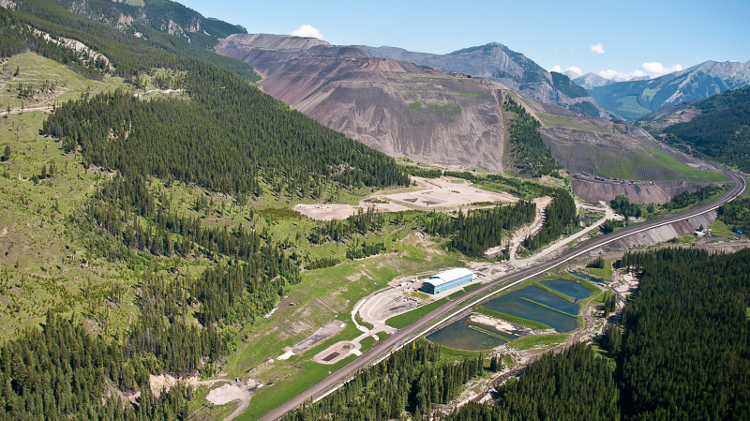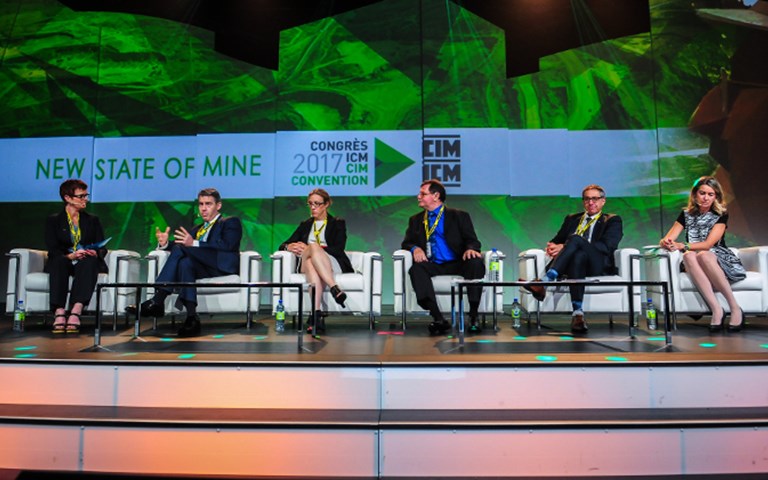The Monday morning plenary discussion on technology adoption, both the opportunities and impacts, set the tone for CIM's annual convention, hosted at the Palais des Congres in Montreal. Luigi D'Astolfo
Grey skies and rain hustled CIM 2017 Convention attendees inside to the opening Plenary Session on Monday morning, but an invigorating discussion on the challenges and implications of innovation kept them there.
Renaud Adams, CEO of Richmont Mines; Michelle Ash, Barrick Gold’s Chief Innovation Officer; Gerald Sanders, NASA’s lead for in-situ resource utilization; ArcelorMittal Mining president Pierre Lapointe; and Daniella Dimitrov, a mining executive and corporate director of Excellon Resources, agreed that it is not if but when fundamental changes will come to the mining industry, and the only thing miners can control is how they adapt to make the most of those innovations.
“We need incremental improvements and big innovations to improve mining operations,” said Carol Plummer, the plenary’s moderator and vice-president of project development for southern business at Agnico Eagle, in her opening remarks.
Big innovations were on the minds of many of the panelists. Ash, the first person to hold the title of Chief Innovation Officer at Barrick, highlighted the potential of technologies like solar power and batteries for powering mine sites, artificial intelligence and robotics to transform the industry. She said Barrick is speaking with representatives of other industries, including the medical sector, retail and aerospace, to see how innovations in those fields could be applied to mining.
Sanders noted that there is a growing realization among space agencies that “it’s important to use resources in space, to make space exploration more affordable,” and that is just one of several factors making space mining more feasible in the future. He said there are common challenges between space and terrestrial mining, and an opportunity to share technologies and solutions.
Meanwhile, Adams urged attendees to consider how mining “fundamentals” like bulk-handling and grinding circuits can be modified to improve performance, at a time when the average deposit grade is declining and mining companies need to invest more work into accessing the ore.
But challenges to wide-scale adoption of transformative processes and technologies still exist, and the most notable one, Lapointe noted, is the industry’s reluctance to invest in them. “I’m pretty sure we’re not benefitting from 100 per cent of what we have,” he said. “We’re getting probably 40 to 50 per cent of what the benefit should be.”
Dimitrov agreed, pointing to a report from the World Economic Forum that named the mining sector one of the most ripe for disruption, with around $425 billion in value waiting to be unlocked by adopting new technology. “We’re an industry that is known as resistant to change,” she said.
Ash also pointed out that stakeholders, including employees, need to understand the changes that are coming. “Our job is to prepare our people, our organizations, and our communities for this accelerating rate of change.”




